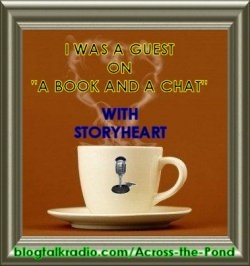December 28 was Childermass Day in the medieval calendar, known today as the Feast of the Holy Innocents. It is the day Herod slaughtered all the baby boys two and under, in his hunt for the newborn king he believed to be a threat to himself.
One source reports that children were beaten on this day in memory of Herod’s cruelty. As a rule, the day was considered ill-luck: not a day to marry, or take on a new project. Edward IV would not be crowned on Childermass Day. And throughout the following year, on whatever day of the week Childermass fell, no new clothes would be bought, and no new undertakings begun, on that day.
But by far the most interesting part of Childermass day is the issue of the boy bishops. Throughout Europe, and especially England, the day was celebrated by making a boy both bishop and head of the town for one day. At first reading, it sounds like a joke of sorts, something for fun and laughs. But on further reading, it’s an eye-opening look at medieval society and medieval childhood.
Prior to the advent– no pun intended– of Protestantism, the ‘boy bishops’ were elected on the Feast of St. Nicholas, December 6. Throughout the Christmas season, they presided over various festivals from then until Candlemas on February 2. On December 28, from the thirteenth to the sixteenth centuries, the boy bishops preached sermons. (It is interesting to note that, for a time reputed to be so patriarchal, some places had girls preaching, too.) The earliest records of boy bishops date from the 1220′s, in York, Salisbury, and St. Paul Cathedrals, delineating their duties. There are also surviving records of the miniature copes, staffs, and rings used by these boys.
The boy bishop, elected by his peers, headed an entire group of school or choir boys, all replacing their elders in the performance of various duties within the religious service, for 24 hours, beginning with Vespers on the night of December 27.
Warren Wood discusses these sermons in his book Children’s Literature of the Early Renaissance. He gives a fascinating and detailed contextual background in which the sermons were preached, telling of the various feasting and customs surrounding the day of the Holy Innocents, before examining the three surviving sermons from that time.
That from St. Paul’s Cathedral is ‘direct and homely,’ while the one written by Richard Ramsey of Gloucester Cathedral and delivered by John Stubs, Boy Bishop of 1558, was ‘racy and colloquial with a spicy vernacular flavor.’ Wooden reports, however, that they were “far more than mockeries of adult sermons,” but rather dealt with serious subjects. The three surviving sermons may have had very different tones, but all dealt with the subject of the feast day, the slaughter of the Innocents, and each discusses the New Testaments attitudes about children, particularly that found in Matthew 18, the admonition that unless you become like children, you will not enter the kingdom of Heaven.
Wooden goes on to make a fascinating distinction between the middle ages’ view of what makes one childlike– innocence and purity– in contrast to the much later Romantics’ ‘veneration’ of chronological childhood, and further mentions that at least one sermon stresses there are elements of childhood, such as frivolity, which are not what Matthew is speaking of.
The tradition of boy bishops lasted for several centuries, ending with the Protestant Reformation.
![]() Tweet This Post
Tweet This Post
Tags: Boy bishops, childermass, herod, reformation



Thank you for your help!
I wanted to thank you for this excellent read!! I definitely enjoyed every little bit of it. I have you bookmarked your site to check out the new stuff you post.
How often do you write your blogs? I enjoy them a lot 2 7 1
That rss option on your blog here is magnificent, you should tell people about it in your next post. I haven’t noticed it for the first couple of times, now I’m using it every morning to check on any updates. I’m on a real slow dial-up link in Ohio and it’s rather discouraging to sit there and wait for such a long time ’til the page loads… but hey, I just found your rss page and added it to the Google Reader and there you are… I’m always up-to-date! Well buddy, keep up the good work and make that rss button a little bigger so that other people can enjoy that as well
Your blog is so informative … keep up the good work!!!!
Thank you for your help!
I just stumbled upon your blog. I really enjoy reading your posts.